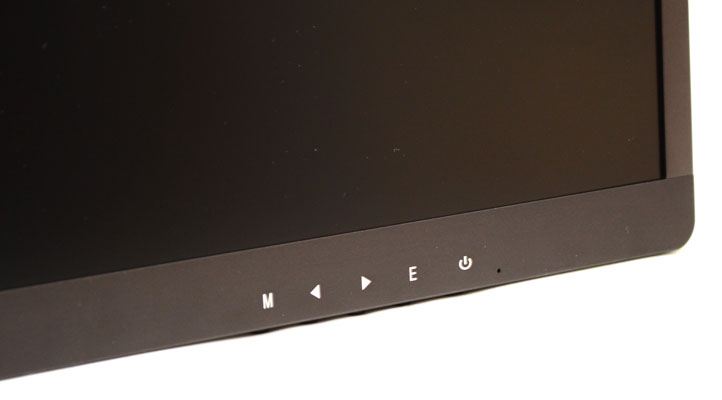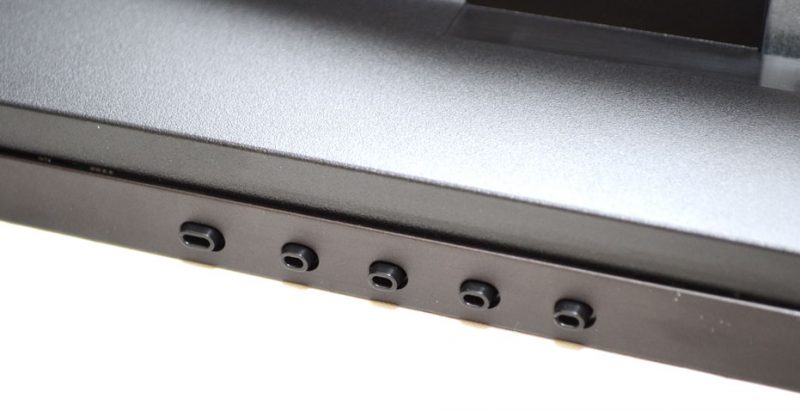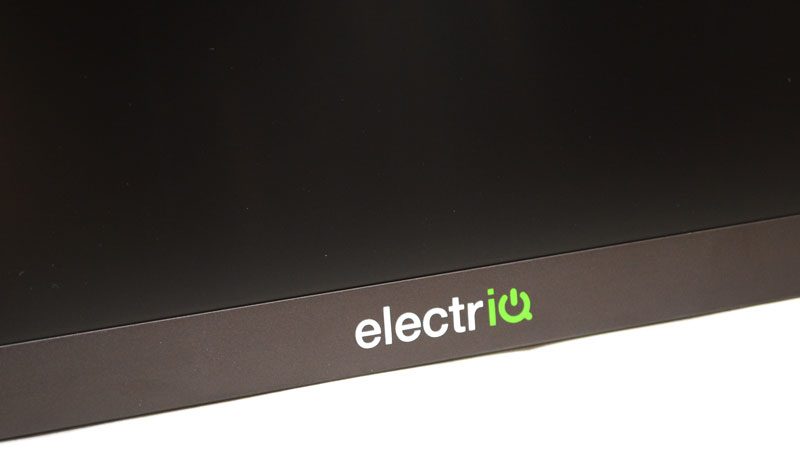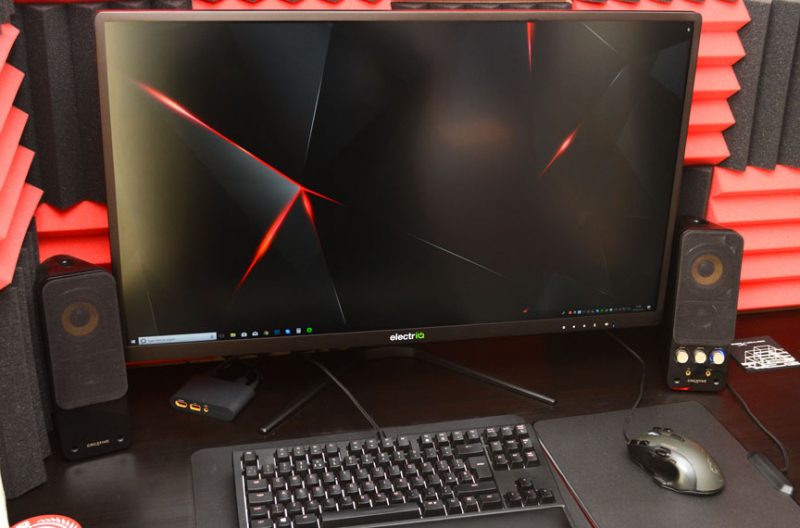ElectriQ 32″ 4K FreeSync IPS Monitor Review
Peter Donnell / 7 years ago
A Closer Look
The monitor looks pretty much as you would expect, a big black rectangle. What does surprise me is the pretty slim bezel, which looks nice and slick given the overall size of the monitor. Cheaper brands tend to feature thicker housing, but that’s not the case here.

The control buttons are on the bottom right, and nicely enough they’re clicky buttons.

Given the market trend for those flipping useless touch buttons, I’m happy to see this.

The brand logo is in the centre, and honestly, I think it’s a bit big and distracting. I know all brands want to show their logo, but a black inlay would have been fine.

Slim Panel Design
As I said before, the panel is impressively thin, and the main chunk of it is nice and flat at the back. The housing for the I/O panel and ventilation is neat and tidy too. Furthermore, with the VEGA mount and low profile design, it should work well for wall mounting.

Along the bottom, you’ll find all the usual connection ports. Nothing fancy, but everything you need really. There’s some small screw holding the two sections of the plastic together, and the plastic panels do have a big of a gap that you can squeeze shut with your finger. It’s not a big deal, but maybe if they add two extra screws along the length would fix that up nicely.

Looking Good!
The stand is pretty slim which is nice, but I feel like it should have a bit more width and depth to it to give the monitor more stability. On my desk, it’s not an issue, but in a more open desk environment, I would want something more secure. Overall though, the monitor does look fantastic. I mean, it’s a freaking 32-inch display, and just regarding raw screen size, it’s bigger than what most people are rocking. The matte finish is beautiful too, helping cut down an impressive amount of glare.

The monitor panel is pretty darn impressive, and the colours are vibrant. What does surprise me is the backlight performance, which doesn’t appear to have any noticeable bleeding in the corners; something which often effects cheaper panels.




















